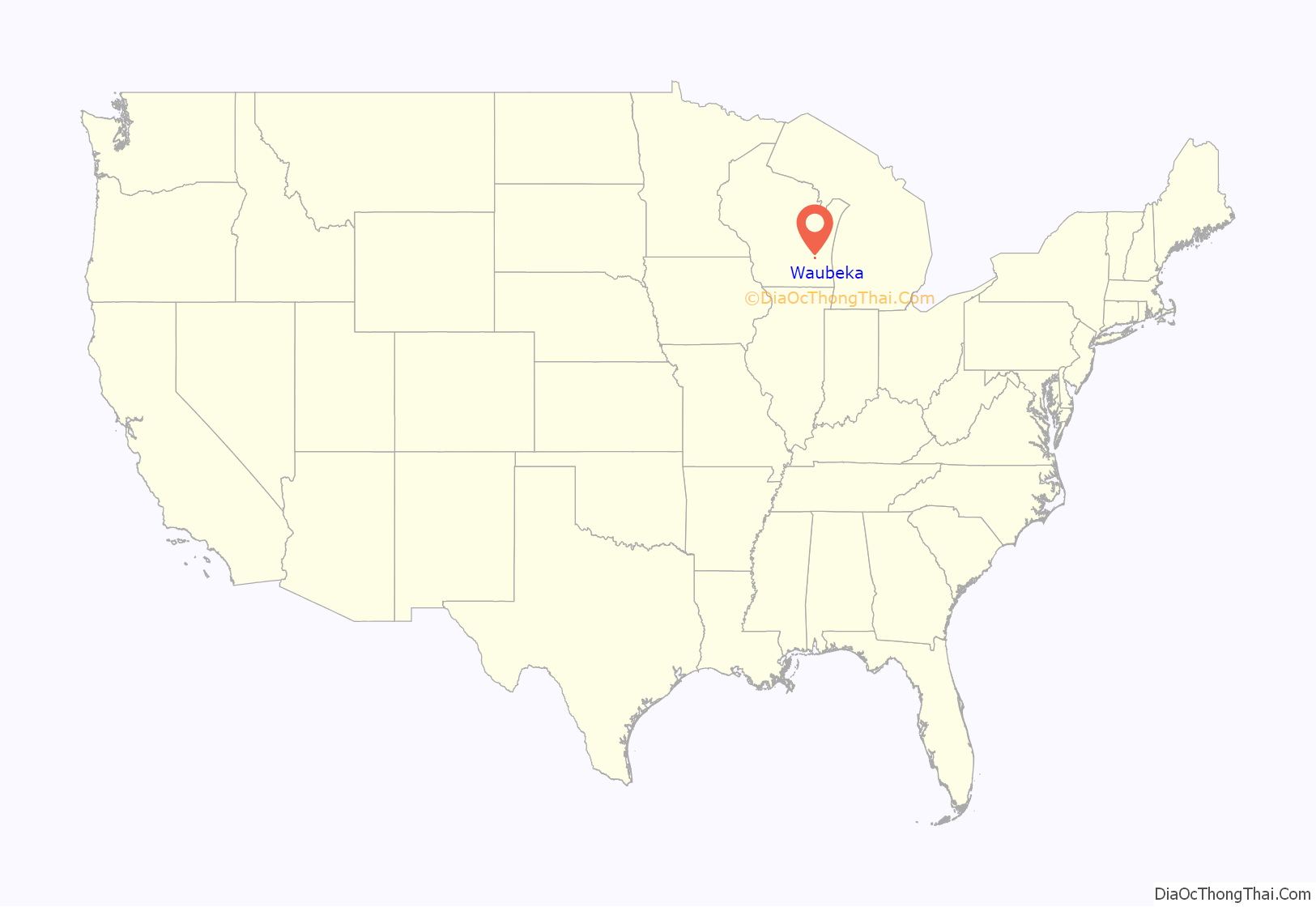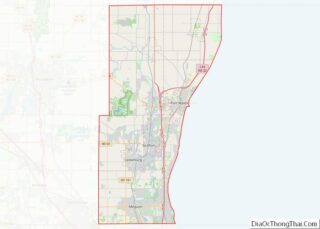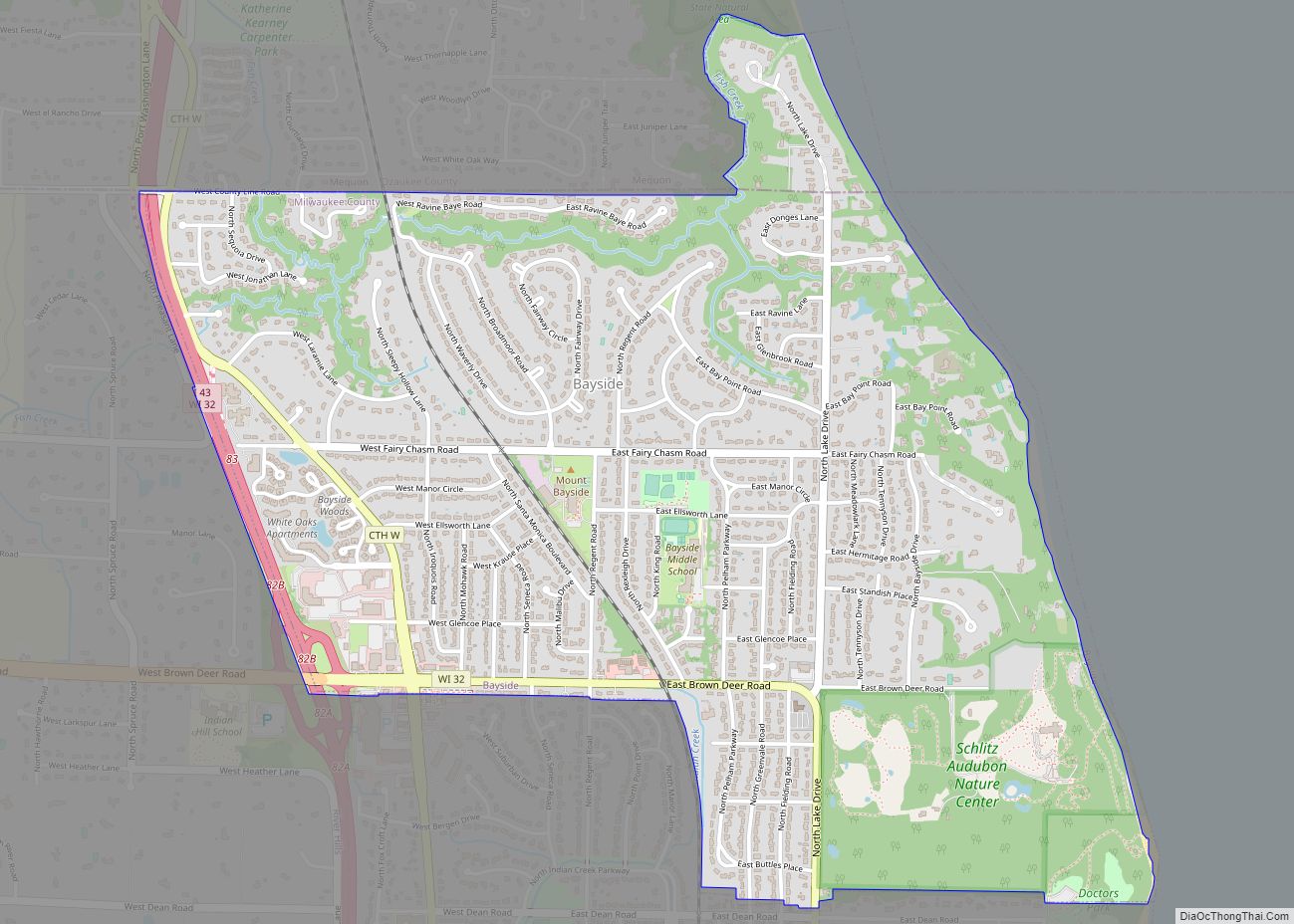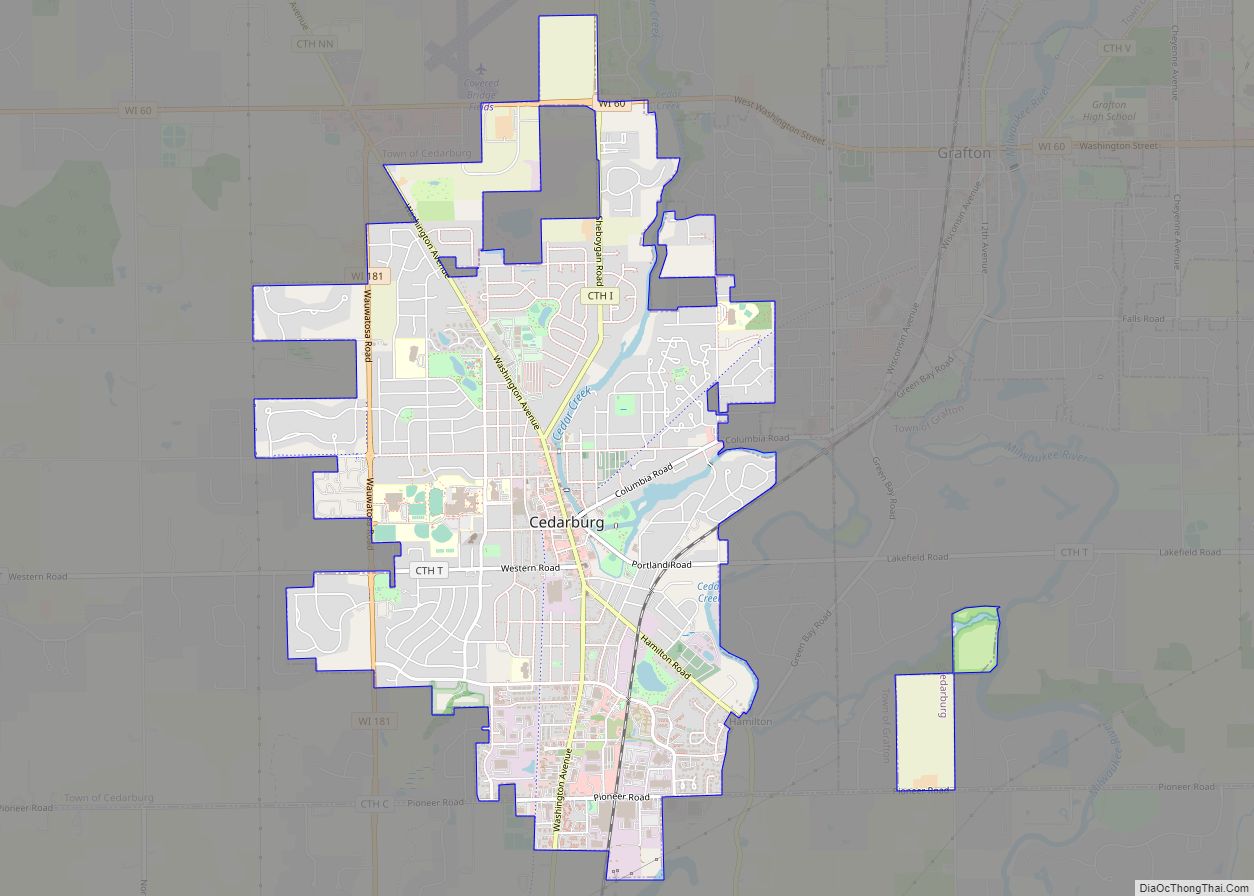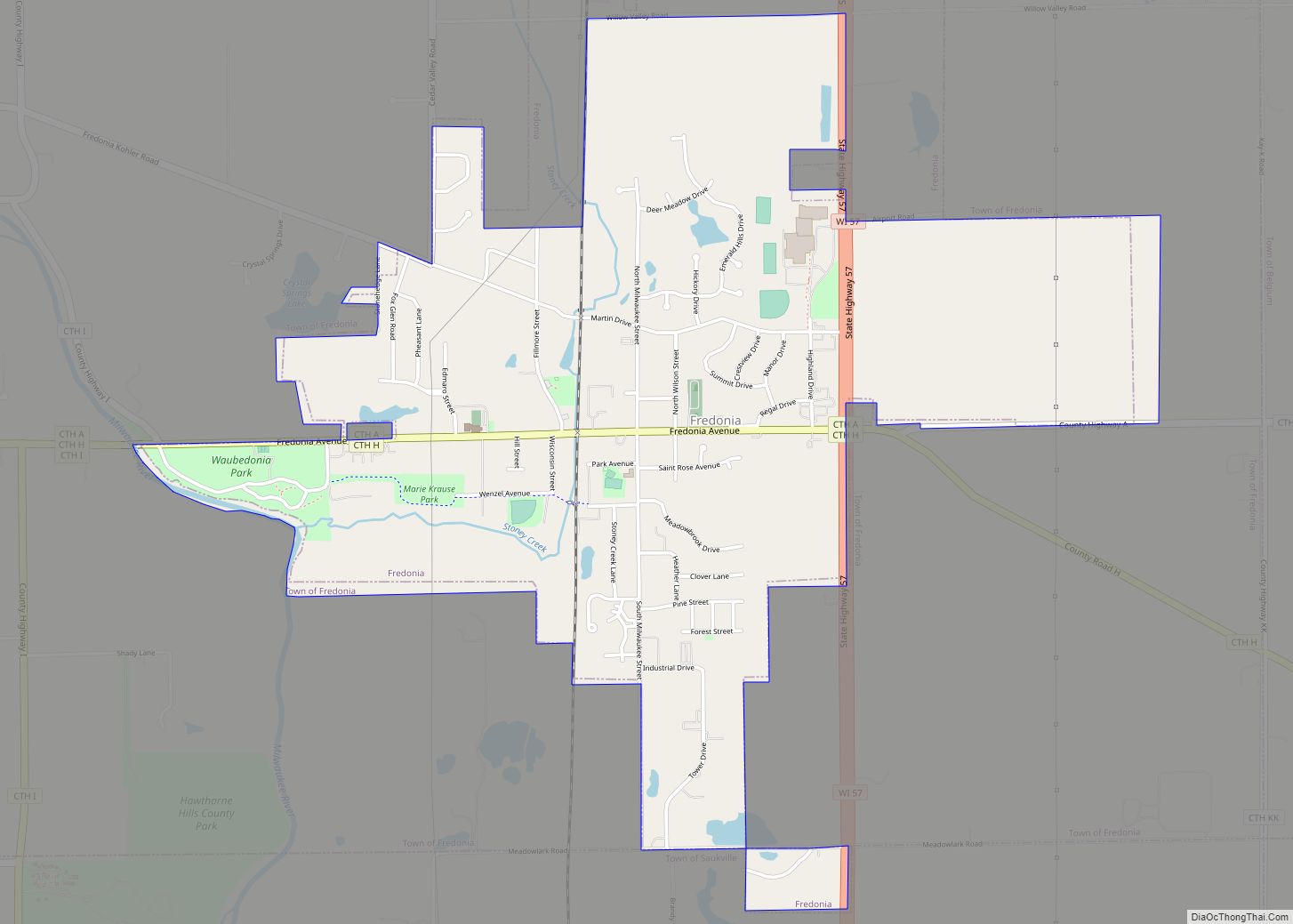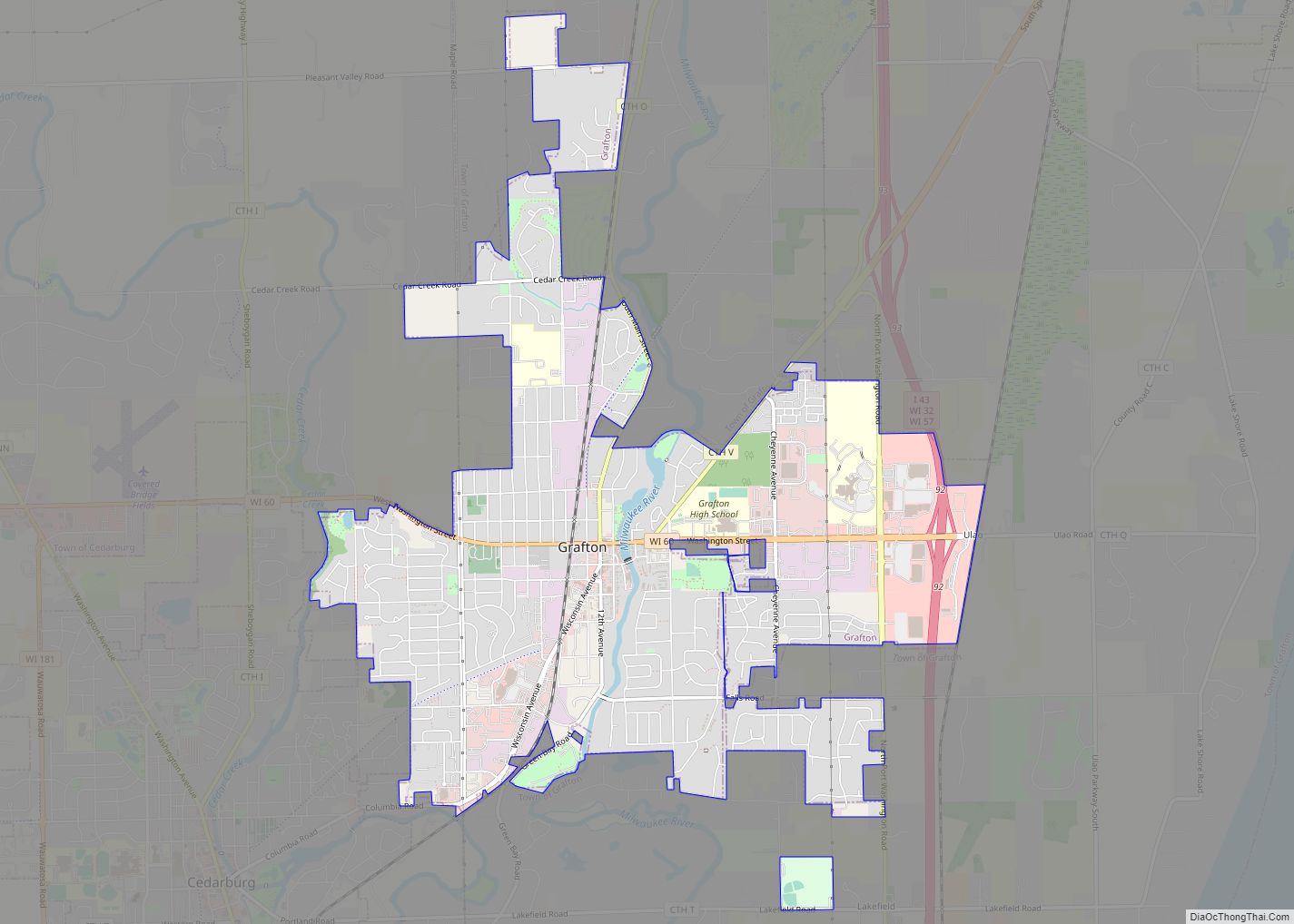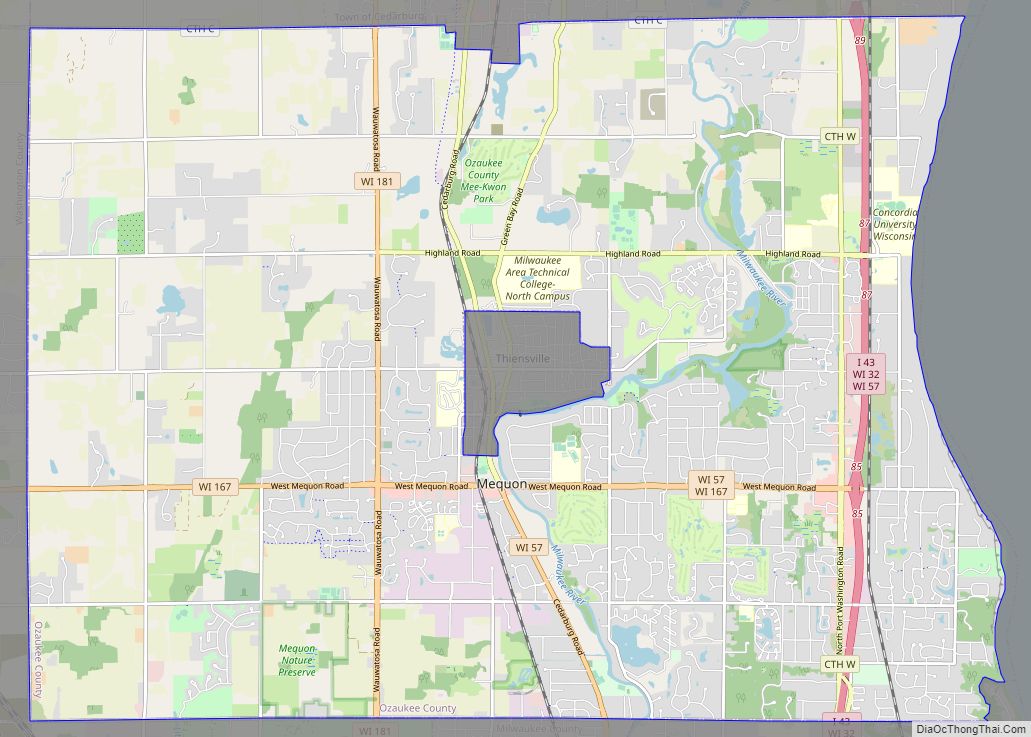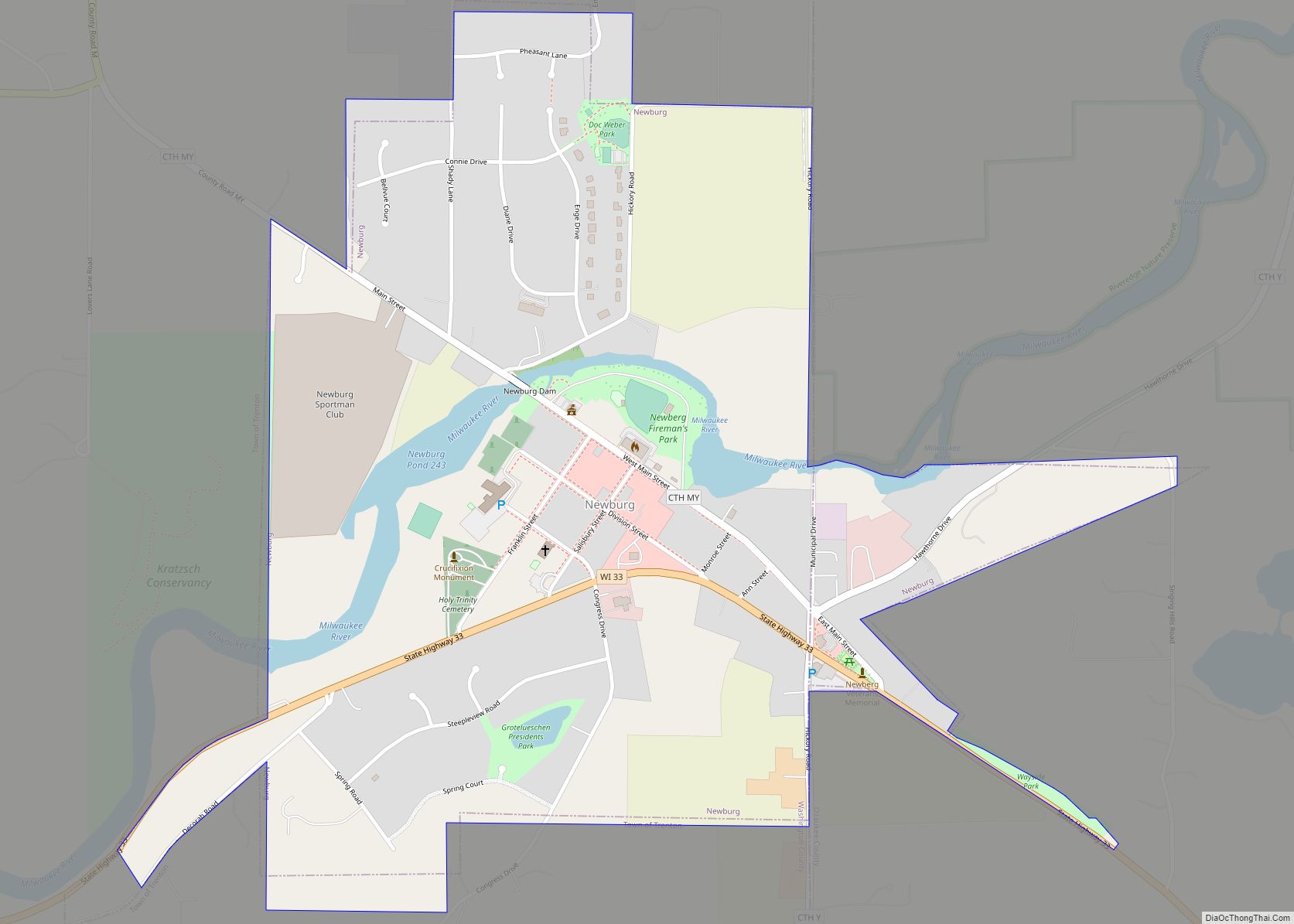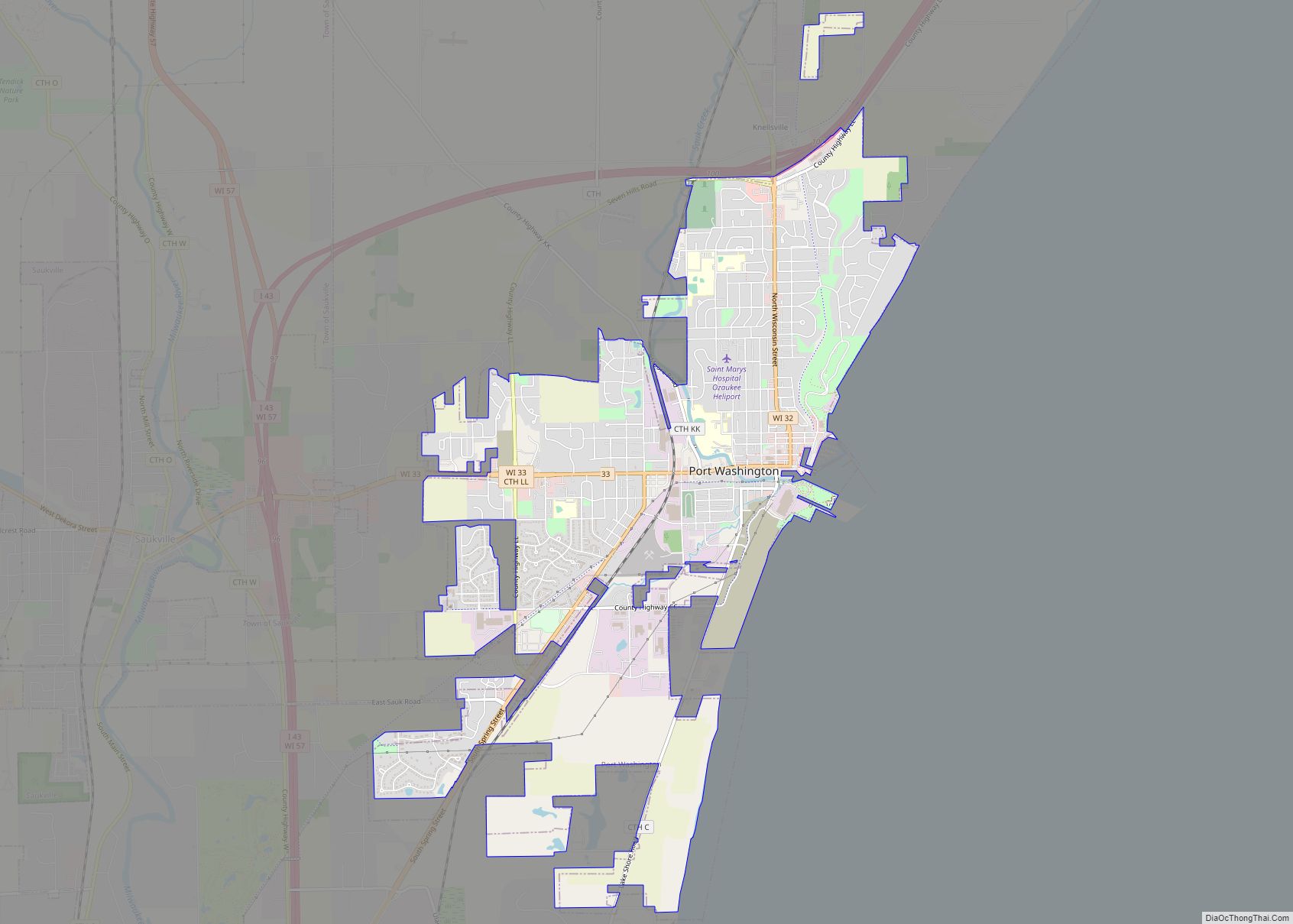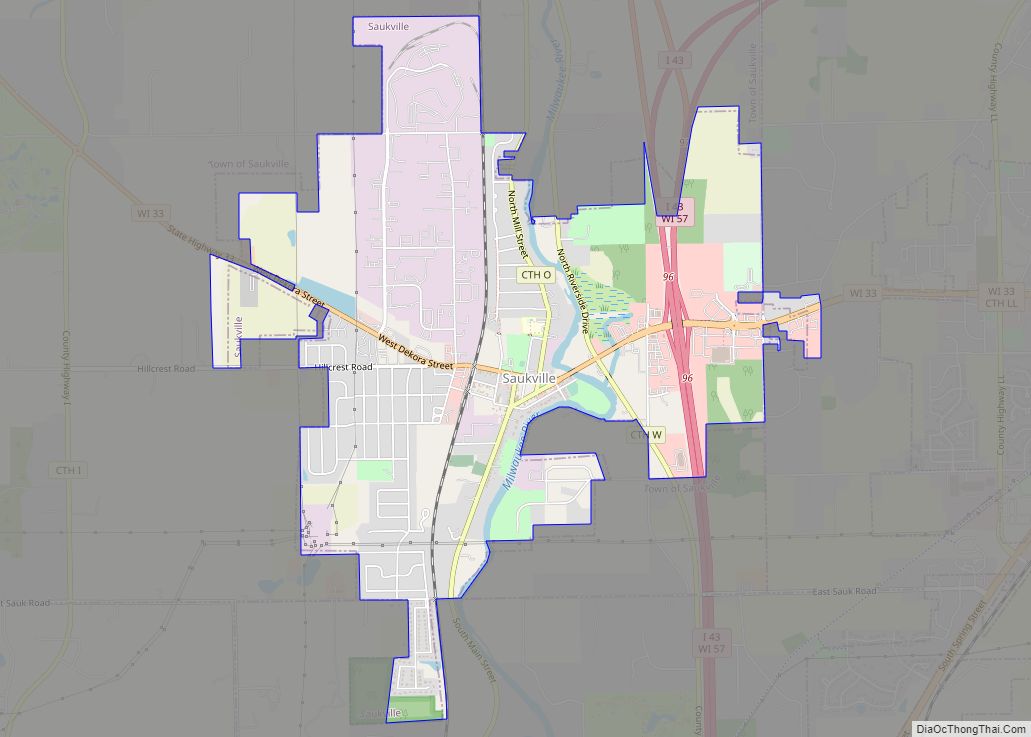Waubeka is an unincorporated census-designated place in the Town of Fredonia, Ozaukee County, Wisconsin, United States. Located on the Milwaukee River, the community is part of the Milwaukee metropolitan area. As of the 2010 census, its population is 657.
Inhabited by Native Americans into the mid-1800s, Waubeka was named for a Potawatomi chief who was friendly with the first white settlers who arrived in the area in the 1840s. Waubeka was the site of the first formal observance of Flag Day in 1885, and today the community is home to the National Flag Day Foundation’s Americanism Center, which serves as the organization’s headquarters and contains a museum.
| Name: | Waubeka CDP |
|---|---|
| LSAD Code: | 57 |
| LSAD Description: | CDP (suffix) |
| State: | Wisconsin |
| County: | Ozaukee County |
| Elevation: | 840 ft (256 m) |
| Total Area: | 2.416 sq mi (6.26 km²) |
| Land Area: | 2.343 sq mi (6.07 km²) |
| Water Area: | 0.073 sq mi (0.19 km²) |
| Total Population: | 657 |
| Area code: | 262 |
| FIPS code: | 5584150 |
Online Interactive Map
Click on ![]() to view map in "full screen" mode.
to view map in "full screen" mode.
Waubeka location map. Where is Waubeka CDP?
History
The land that became the Waubeka was originally inhabited by Native Americans, including the Potawatomi tribe, who surrendered the land to the United States government in the 1833 Treaty of Chicago. While many Native people moved west of the Mississippi River to Kansas, some chose to remain, and were referred to as “strolling Potawatomi” in contemporary documents because many of them were migrants who subsisted by squatting on their ancestral lands, which were now owned by white settlers. One such group was led by Chief Waubeka, who maintained a winter camp on the south bank of the Milwaukee River in present-day Waubeka as late as 1845. The chief’s wigwam was located near the present site of the Gerald Joose house. In the Potawatomi language, “Waubeka” means “metal.” Eventually the Potawatomi who evaded forced removal gathered in northern Wisconsin, where they formed the Forest County Potawatomi Community.
In the 1840s, Waubeka was the largest settlement in the Town of Fredonia. The first settlers were English, Irish, Scottish, and Yankees from the East Coast. In 1848, a group of German immigrants arrived from Prussia and settled in the northern part of Waubeka. Luxemburger and Belgian immigrants settled in eastern Waubeka, and immigrants from Bavaria and Saxony settled in the northwest.
Waubeka Road Map
Waubeka city Satellite Map
Geography
Waubeka is 840 feet (256 m) above sea level and is located at 43°28′30″N 87°59′25″W / 43.47500°N 87.99028°W / 43.47500; -87.99028 (43.4749994, -87.9903696). According to the United States Census Bureau, the community has a total area of 2.416 square miles (6.26 km): 2.343 square miles (6.07 km) land and 0.073 square miles (0.19 km) water. Waubeka is located in the Town of Fredonia, and borders to the Village of Fredonia to the east and the Town of Saukville to the south.
The community is located in the Southeastern Wisconsin glacial till plains that were created by the Wisconsin glaciation during the most recent ice age. The area has some subterranean Silurian limestone formations that are part of the Racine Dolomite that stretches through eastern Wisconsin and Illinois.
Before white settlers arrived in the area, the Waubeka area was an upland forest dominated by American beech and sugar maple trees. There were also white cedars growing along the Milwaukee River, which flows along the community and provided a power source for the community’s early industries. Much of the original forest was cleared to prepare the land for agriculture.
As land development continues to reduce wild areas, wildlife is forced into closer proximity with human communities like Waubeka. Large mammals, including white-tailed deer, coyotes, North American river otters and red foxes can be seen in the village. Many birds, including great blue herons and wild turkeys are found in the community.
The region struggles with many invasive species, including the emerald ash borer, common carp, reed canary grass, the common reed, purple loosestrife, garlic mustard, Eurasian buckthorns, and honeysuckles.
See also
Map of Wisconsin State and its subdivision:- Adams
- Ashland
- Barron
- Bayfield
- Brown
- Buffalo
- Burnett
- Calumet
- Chippewa
- Clark
- Columbia
- Crawford
- Dane
- Dodge
- Door
- Douglas
- Dunn
- Eau Claire
- Florence
- Fond du Lac
- Forest
- Grant
- Green
- Green Lake
- Iowa
- Iron
- Jackson
- Jefferson
- Juneau
- Kenosha
- Kewaunee
- La Crosse
- Lafayette
- Lake Michigan
- Lake Superior
- Langlade
- Lincoln
- Manitowoc
- Marathon
- Marinette
- Marquette
- Menominee
- Milwaukee
- Monroe
- Oconto
- Oneida
- Outagamie
- Ozaukee
- Pepin
- Pierce
- Polk
- Portage
- Price
- Racine
- Richland
- Rock
- Rusk
- Saint Croix
- Sauk
- Sawyer
- Shawano
- Sheboygan
- Taylor
- Trempealeau
- Vernon
- Vilas
- Walworth
- Washburn
- Washington
- Waukesha
- Waupaca
- Waushara
- Winnebago
- Wood
- Alabama
- Alaska
- Arizona
- Arkansas
- California
- Colorado
- Connecticut
- Delaware
- District of Columbia
- Florida
- Georgia
- Hawaii
- Idaho
- Illinois
- Indiana
- Iowa
- Kansas
- Kentucky
- Louisiana
- Maine
- Maryland
- Massachusetts
- Michigan
- Minnesota
- Mississippi
- Missouri
- Montana
- Nebraska
- Nevada
- New Hampshire
- New Jersey
- New Mexico
- New York
- North Carolina
- North Dakota
- Ohio
- Oklahoma
- Oregon
- Pennsylvania
- Rhode Island
- South Carolina
- South Dakota
- Tennessee
- Texas
- Utah
- Vermont
- Virginia
- Washington
- West Virginia
- Wisconsin
- Wyoming
